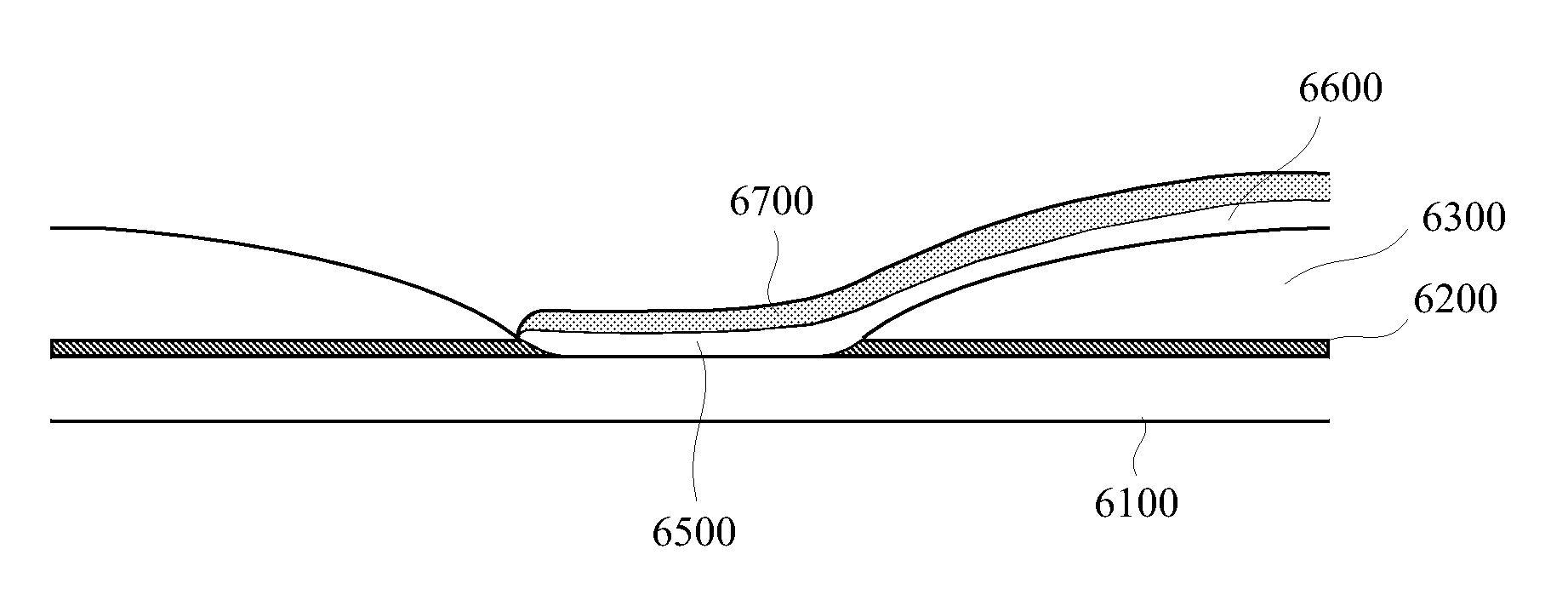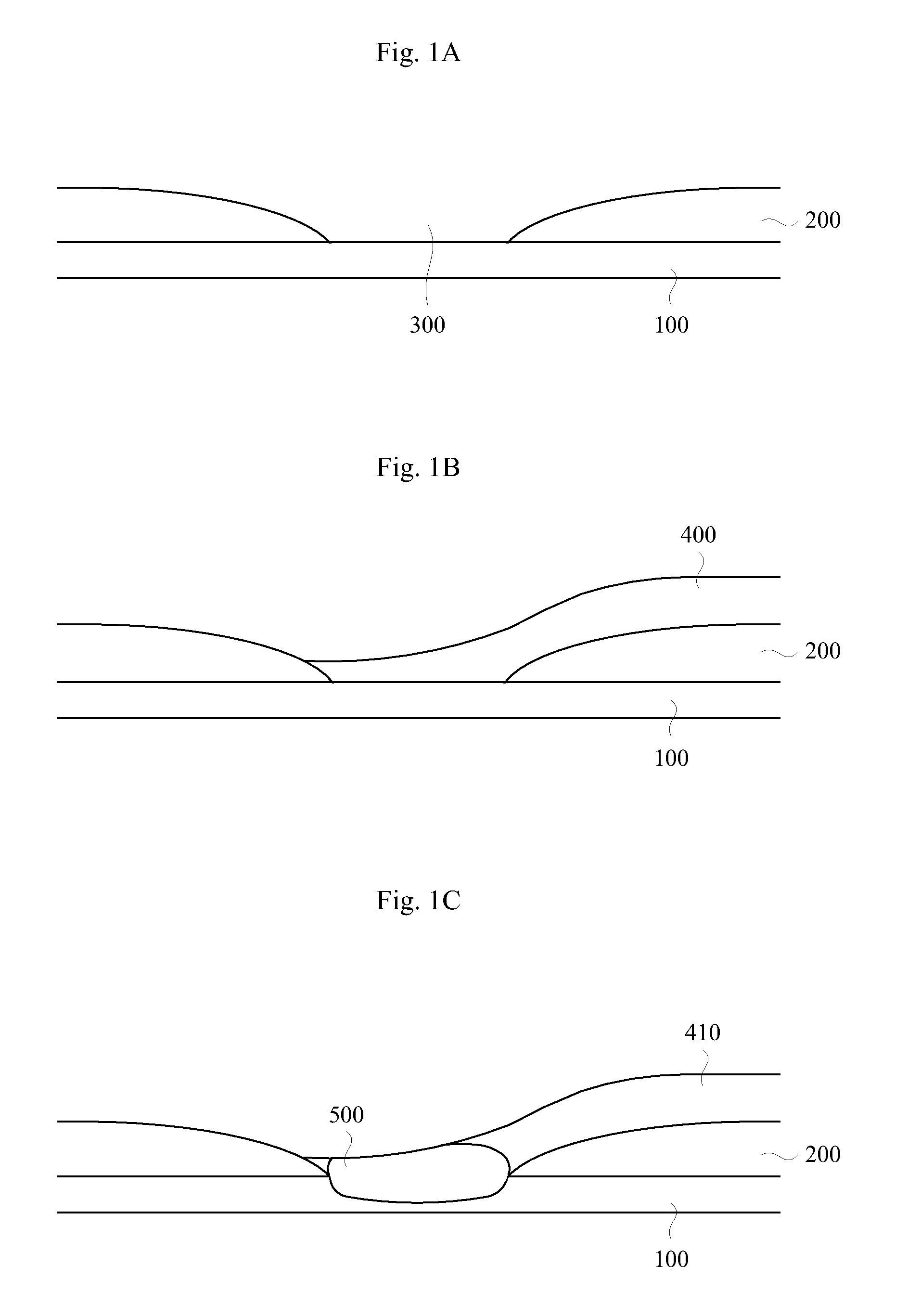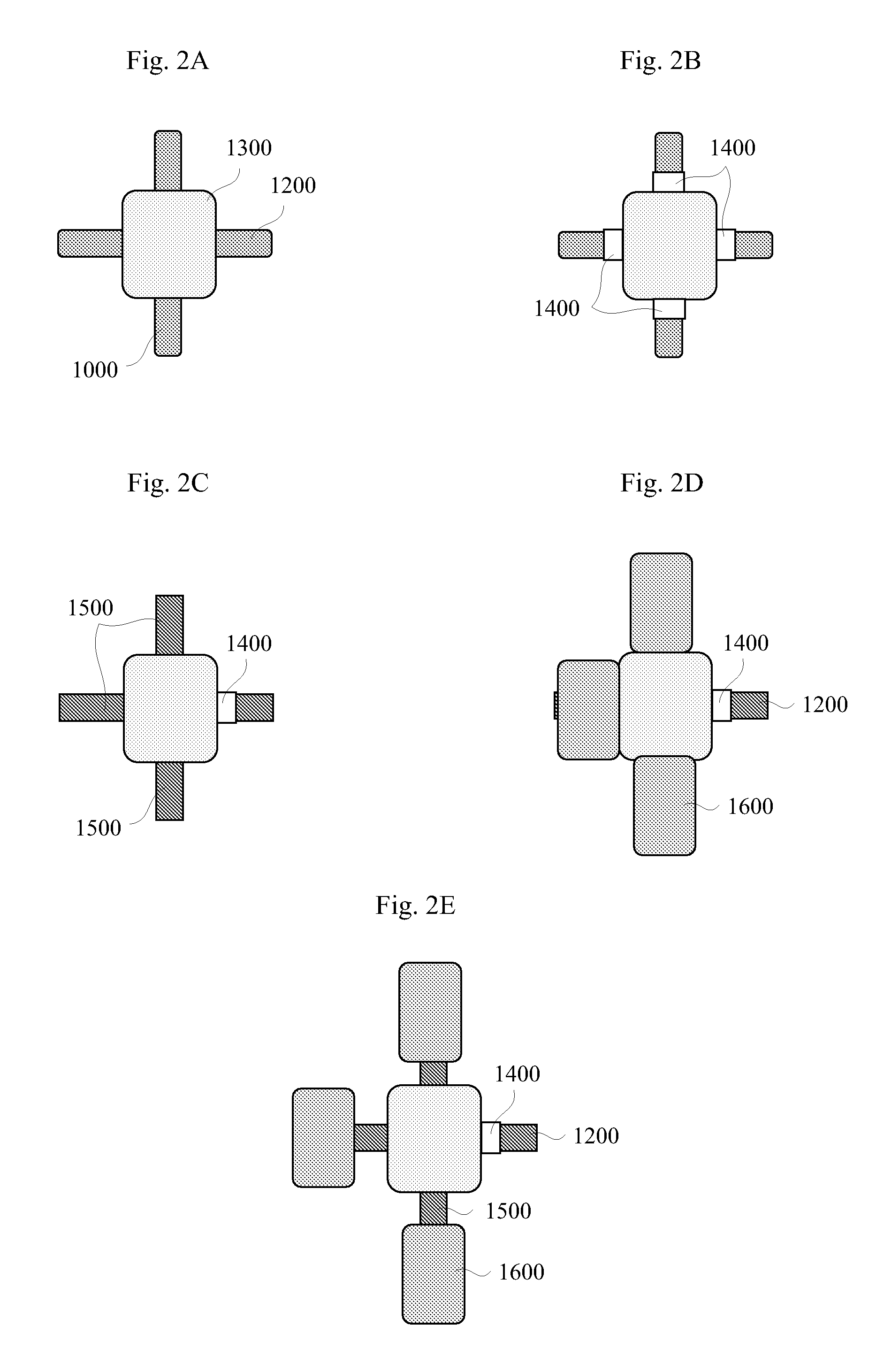Printing of contact metal and interconnect metal via seed printing and plating
a technology of interconnecting metal and contact metal, which is applied in the direction of basic electric elements, semiconductor devices, electrical equipment, etc., can solve problems such as metal breakage or discontinuity, and achieve the effect of eliminating the need for etching, and reducing the number of processing steps
- Summary
- Abstract
- Description
- Claims
- Application Information
AI Technical Summary
Benefits of technology
Problems solved by technology
Method used
Image
Examples
working examples
Formation of Contacts and Local Interconnects
[0085]The feasibility of metal silicide as a contact material was demonstrated with evaporated Pd. Palladium silicide (Pd2Si) formation overcame the presence of a surface oxide on the silicon and formed low resistance ohmic contacts to conventional and spincoated silicon films, thereby alleviating the need for special cleaning (e.g., a sputtering process) to clean contaminants from the silicon surface. The reaction between Pd and Si occurred at 300° C. in N2 or Ar / H2 as confirmed by x-ray diffraction, cross section SEM, and four point probe measurements. Functional via chains (contacts) using Pd2Si and Al interconnects were similarly demonstrated. Contact resistances in this case were about 10−6 ohm-cm2.
PUM
| Property | Measurement | Unit |
|---|---|---|
| temperature | aaaaa | aaaaa |
| temperature | aaaaa | aaaaa |
| temperature | aaaaa | aaaaa |
Abstract
Description
Claims
Application Information
 Login to View More
Login to View More - R&D
- Intellectual Property
- Life Sciences
- Materials
- Tech Scout
- Unparalleled Data Quality
- Higher Quality Content
- 60% Fewer Hallucinations
Browse by: Latest US Patents, China's latest patents, Technical Efficacy Thesaurus, Application Domain, Technology Topic, Popular Technical Reports.
© 2025 PatSnap. All rights reserved.Legal|Privacy policy|Modern Slavery Act Transparency Statement|Sitemap|About US| Contact US: help@patsnap.com



